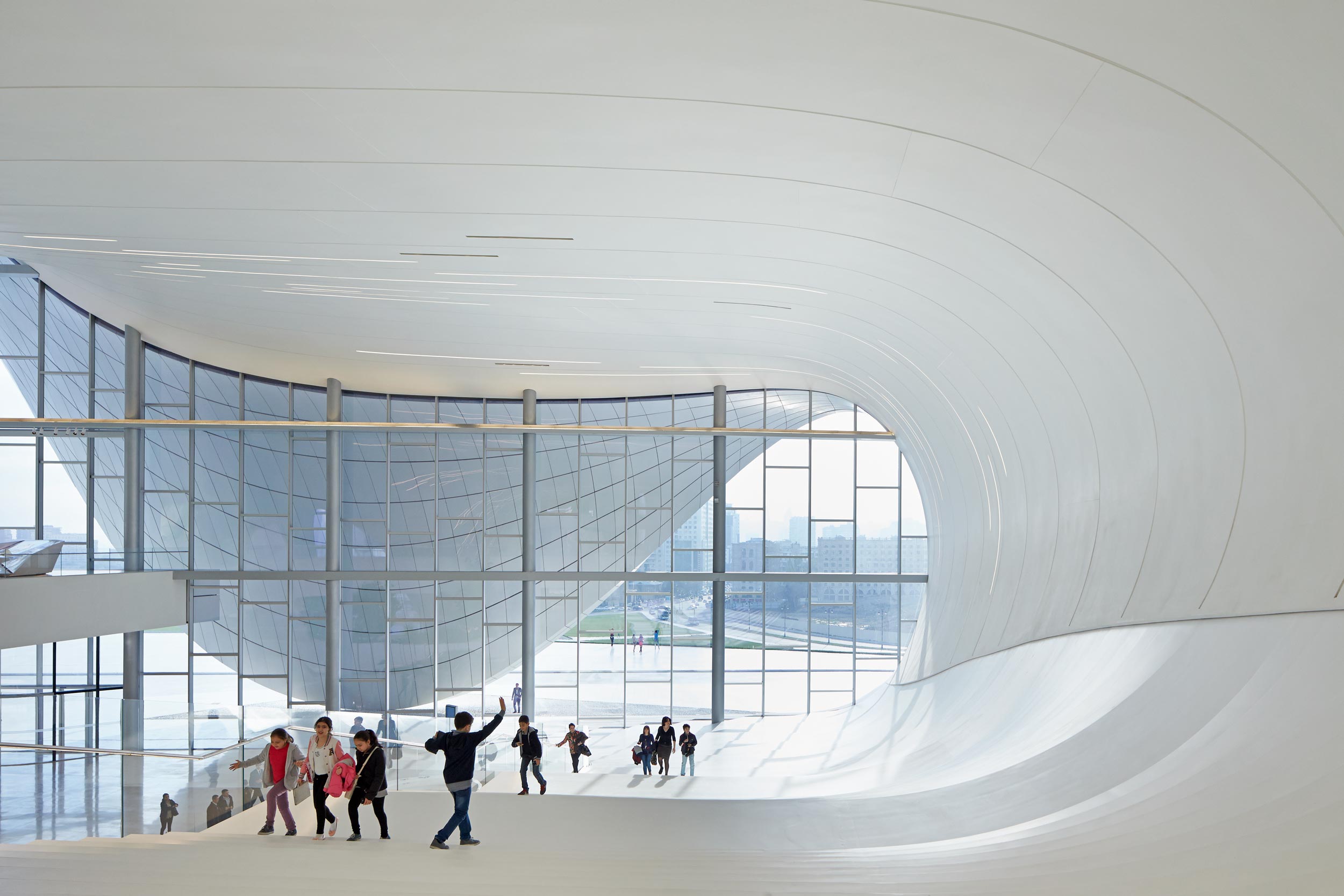
The rippling roof of Baku’s new cultural centre rises to create large performance spaces and auditoria, before melting into the ground of an otherwise homogeneous Soviet setting. Our input enabled Zaha Hadid Architects to design a fully supported free-form building in Azerbaijan’s capital and divide its vast interior into a range of usable spaces.
A design masterpiece combining auditoria, a library and a museum
The building, which houses three auditoria, a library and a museum, came ready for construction on a demolished, re-graded site, with minimal obstructions. Foundations consisted of piled rafts, bearing onto hard clay around 4 m below ground, designed to withstand artesian pressure from the groundwater below.

Working closely with our in-house parametric research team, we analysed variances in form and structure under different conditions. The site is in a known earthquake zone, and we ran models to see how the building would cope under extreme circumstances. Our end superstructure strategy was to place a series of trusses 150 m long and up to 70 m high at 9 m centres across the building.
Due to the variability of the form, each truss had a circular geometry and was individually moulded with a slightly different radius. Some spanned up to 45 m across the larger part of the structure, while shorter beams in the museum area were spaced closer together and spanned up to 25 m. We added fixed and sliding supports to minimise the stresses caused by an earthquake, whilst also mitigating thermal movement.
Through the use of an eight-storey concrete structure in the library area alongside the vertical cores, we achieved lateral stability, and the long-span trusses were able to carry secondary trusses to both avoid the use of columns and support the stone-panelled cladding above. We utilised a system of purlins spanning between the primary trusses which supported a ‘cold deck’ roof construction, with insulation set below a waterproof membrane and stone with aluminium framing above.

2014 Design Museum ‘Design of the Year’ Award





